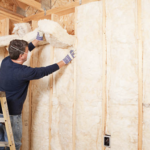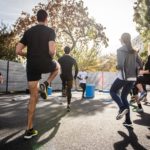Maintaining mobility when you’re unwell at home is crucial. It facilitates circulation, helps prevent stiffness, and can speed recovery. It’s the physical equivalent of keeping a business agile during downturns—staying active to bounce back more robustly.
So, when illness interrupts your fitness rhythm, bridge the fitness gap to maintain mobility by engaging in gentle activities that support healing without demanding too much from your body.
Charting the At-Home Mobility Course
Once you know How to Get a Doctors Note Online (if required), have informed your boss of your absence, and are at home resting and recovering, you can begin to think about the best ways to maintain your mobility.
Begin with creating a blueprint for a modified routine. This doesn’t mean plotting every detail but establishing a framework that adapts to your energy levels each day. It might include stretching upon waking or incorporating balance exercises as you brew your morning coffee, for example.
The objective is not peak performance; it’s sustaining movement and flexibility. By doing so, your physical vessel remains sea-worthy, ready to return to full strength once the storm passes.
The Tools for Treading Lightly
In this less-is-more phase of fitness, look to household items that double as workout allies. For example, a wall could offer support for standing exercises. By using everyday items to enhance your fitness, you can maintain mobility without the need for specialized equipment.
Structure your activities around them. Perform gentle twists, bends, and stretches that respect your body’s current state.
Staying the Course with Minimal Effort
Prioritize exercises that yield high returns on investment for mobility and joint health, such as controlled leg lifts or shoulder rolls, which can be performed even from the comfort of your bed or couch.
While these movements may seem inconsequential compared to your regular workouts, remember they are compound interest for your body—small, consistent deposits today will pay dividends in recovery and long-term flexibility.
Tapping into Technology for Guidance
Leveraging technology in this homebound scenario is akin to tapping into a remote workforce when the office is out of reach. There’s a wealth of apps and online platforms offering guided mobility exercises tailored for those with low energy or limited space.
Select those that resonate with your current state, perhaps gentle yoga flows or tai chi sequences, that can be replicated within the confines of your living room.
With these digital coaches, you’re never truly going it alone. Even from home, you’ve got expert guidance at your fingertips, ensuring each movement is purposeful and safe.
Harnessing Routine to Fuel Recovery
The power behind a well-established routine is like the momentum of a successful daily business ritual—it can carry you through slumps with relative ease.
Even when unwell, anchor your day with mobility work at set intervals. Align these sessions with other daily activities: gentle stretches after meals or a series of joint mobilizations before your evening wind-down routine, for instance.
Having these checkpoints not only aids in maintaining your physical mobility but also instills a sense of normalcy and control during times of recovery, much like clockwork processes stabilize a fluctuating business environment.
Adapting to the In-Between Moments
Life’s in-between moments, much like the brief pauses between business meetings, present opportunities for mobility maintenance. As you navigate recovery at home, identify these interstitial times—waiting for tea to steep or during commercial breaks on TV—as chances for movement.
These micro-sessions are akin to efficient email management strategies: swift, purposeful, and surprisingly effective in maintaining order amidst chaos.
Small circles of the ankle or gentle twists of the torso can be seamlessly integrated without disrupting your recovery process. It’s about utilizing these snippets of time intelligently—keeping the wheels of motion and flexibility gently turning as your body heals.
The Takeaway
When you’re unwell, embracing at-home mobility work can shore up your defenses, fostering resilience both physically and mentally. Just as businesses evolve through challenges, your approach to fitness when ill should be equally dynamic and responsive.
So, remember these key points:
- Modify your routines to align with your energy levels.
- Utilize everyday items as exercise tools.
- Focus on low-effort, high-return mobility exercises.
- Tap into digital resources for guided exercises.
- Integrate mobility work into daily routines to maintain a sense of stability.
- Capitalize on brief everyday moments to weave in micro-mobility exercises that keep the body subtly engaged during recovery periods.
Want to unlock greater wellness?
Listen to our friends over at the Wellness + Wisdom Podcast to unlock your best self with Drew Canole of Organifi:








 Tips For Transforming Your Sleep Routine with Weighted Blankets for Anxiety Relief
Tips For Transforming Your Sleep Routine with Weighted Blankets for Anxiety Relief